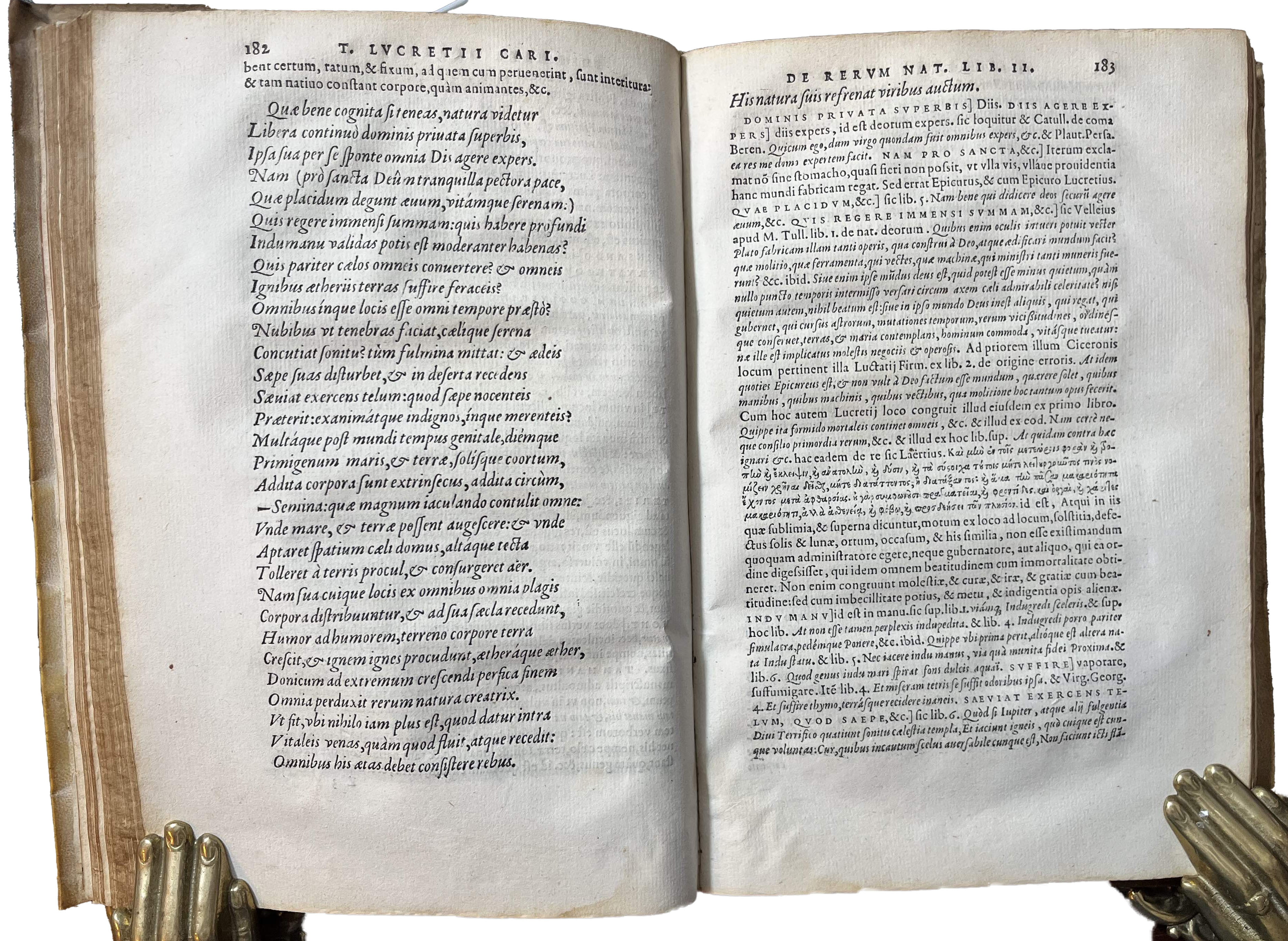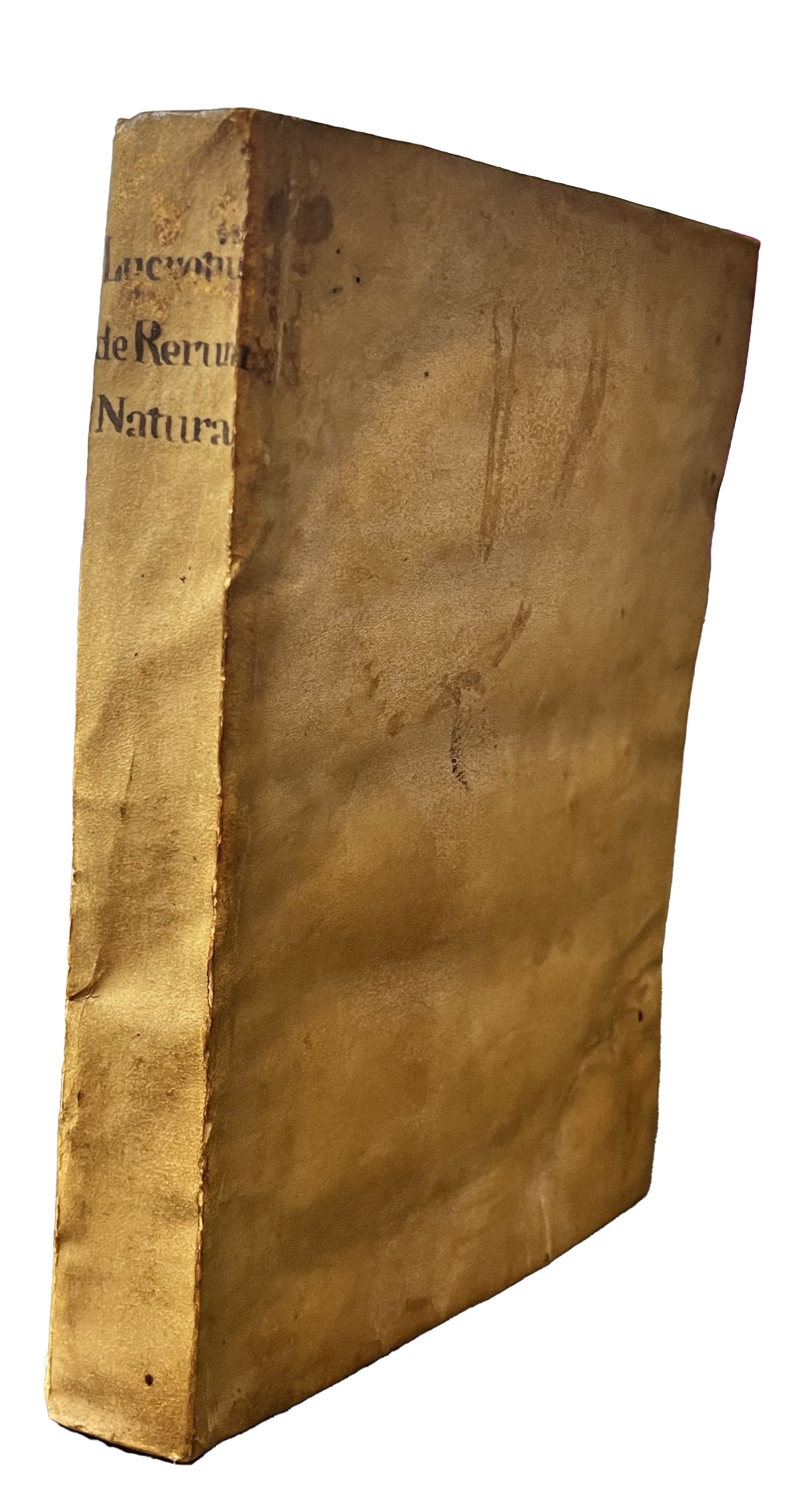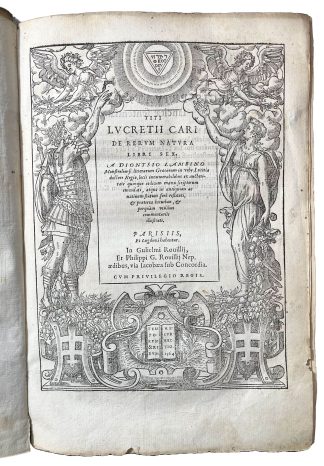LUCRETIUS.
‘A MONUMENT OF ERUDITION’ (PMM)
De rerum natura.
Paris, Guillaume Rouillé & Philippe Gaultier, 1564.£4,250.00
4to. pp. [20], 559, [5]. Roman letter, with Italic, occasional Greek. Title within woodcut border with Tetragram, putti and personifications, decorated initials and ornaments. Light yellowing, a few gatherings slightly browned or foxed, very light, intermittent water stain to lower blank gutter, the odd minor ink mark. A very good copy in contemporary limp vellum, all edges richly gauffered gilt, early ms title to spine, early ms ‘Comparato de Re(?)’ to lower cover, couple of early ms marginalia.
A very good copy of Lucretius’ masterpiece of natural philosophy, cosmology and atomism, edited by the fine scholar Denys Lambin (1520-72). ‘Of very few languages can it be said that the first surviving major poem in it is an exposition of a philosophical system of considerable subtlety. […] In [‘De rerum natura’] the atomic theory, the most vivid and tender depictions of nature, and a sense of the beauty and rhythm of words […] combine in the most astonishing way to produce one of the grandest and most moving poems in the Latin language’ (PMM).
First published c.1473, it is the only known work by Titus Lucretius Carus (99-55BC), a Roman author and philosopher. ‘De rerum natura’ – ‘On the nature of things’ – is imbued with Epicureanism, which supported an atomistic and materialistic worldview, the ultimate goal being tranquillity, and freedom from fear and pain, achieved through the knowledge of the workings of the universe. These theories all rest on a view of nature based on the movement of atoms, including the astounding, earliest description of what would be later called ‘Brownian motion’ of dust particles, also studied by Einstein, outlined in the first two books. Book III applies the same principles to the human body, demonstrating that the soul, too, dies; Book IV discusses the ‘theory of images cast by substances which do not perish with the dissolution of the atoms’ they are made of; Book V is on the origin of the world and humankind, with a theory of the three ages of human civilisation (Stone, Bronze and Iron); and Book VI explains natural phenomena such as earthquakes and thunderstorm from the point of view of natural philosophy, debunking superstitious explanations.
This ed., variously dated 1563/4, is considered Lambin’s editorial masterpiece. ‘The first ed. contains his collation of 15 mss, and the notes and observations that were occasionally supplied him by Ternebus and Auratus; it also has learned commentaries, which evince the wonderful erudition of Lambinus’ (Dibdin).
USTC 153511; PMM 87 (1563); Dibdin I, 248; Brunet III, 1219, ‘il se trouve des exemplaires datés de 1564.’In stock






